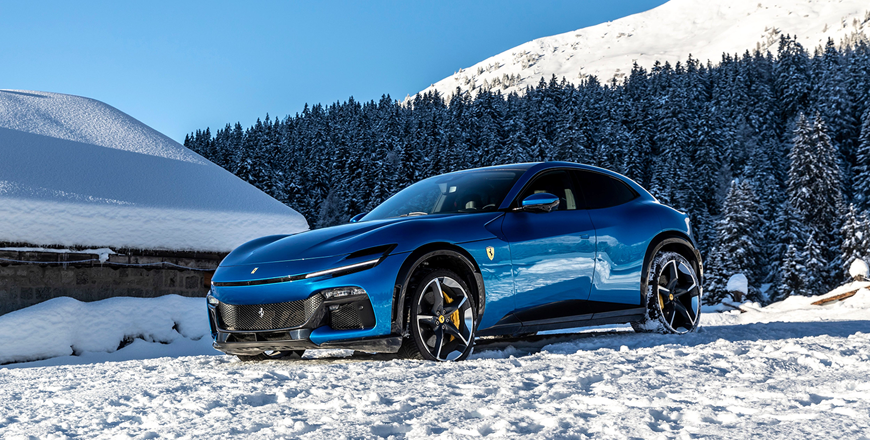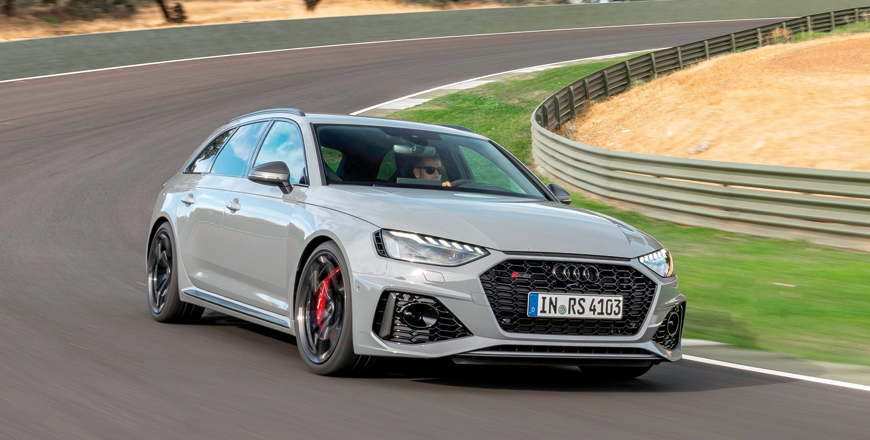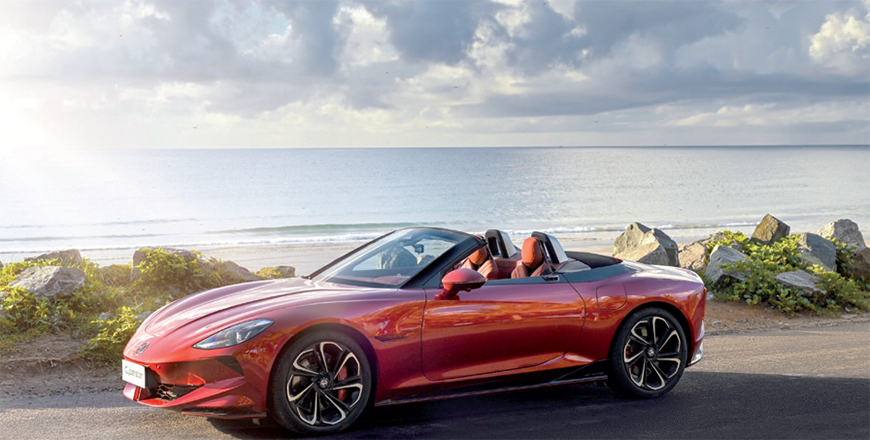You are here
The age of the Super SUV: Ferrari Purosangue, BMW XM and Lotus Eletre
By Ghaith Madadha - Mar 27,2023 - Last updated at Mar 27,2023

Photos from top to bottom respectively courtesy of Lada, BAIC and Haval
Attempting to square the engineering circle traditionally separating sport cars and high-riding vehicles, luxury Super SUVs are derided by some sports car purists, but have proved to be lucrative cash cow since the 2003 Porsche Cayenne.
A modern automotive staple, luxury sports and super SUVs and crossovers include standouts like the Lamborghini Urus and Alfa Romeo Strelvio Quadrifoglio, while the latest crop includes first efforts from Ferrari and Lotus, and one serving as BMW’s sporting flagship.
Ferrari Purosangue
Anathema to Ferrari just a decade ago, a Prancing Horse SUV was however inevitable to sate luxury car buyers’ appetite for heavy, high-riding four-wheel-drive vehicles, and expand sales. Anticipated with excitement and apprehension, the Purosangue finally hits the road in coming weeks. Pointedly referred to as a “four-door four-seater” rather than SUV by Ferrari, it resembles a higher-riding version of Ferrari’s now retired GTC4 Lusso “shooting brake” estate –— albeit with rear-hinged rear “suicide” doors — than a traditionally bulky SUV.
Immediately identifiable with its jutting nose, lasciviously long bonnet, pinched waist, athletically broad rearwards stance and sophisticated airflow management, the luxuriously-appointed Purosangue is meanwhile powered by a prodigious, naturally-aspirated 6.5-liter V12 engine mounted far back for near-perfect weighting, and developing 715BHP at 7,750rpm and 528lb/ft at 6,250rpm. Dispatching 0-100km/h in 3.3-seconds and 0-200km/h in 10.6-seconds, with a 310km/h top speed, the Purosangue’s high-revving 8,250rpm engine nevertheless provides plenty of versatility, with 80 per cent torque available from just 2,100rpm.
Primarily driving its rear wheels through an 8-speed dual-clutch automated gearbox, the Purosangue’s 4RM-S all-wheel-drive system meanwhile powers the front wheels directly from the front of the crankshaft through a separate transmission system, when additional road-holding is necessary. Incorporating four-wheel-steering for enhanced cornering agility and high speed stability, the Purosangue’s sophisticatedly managed dynamic systems also include a 48v electric motor powered active suspension system controlling each wheel, for improved cornering body control and ride comfort.
Specifications
- Engine: 6.5-litre, V12-cylinders
- Gearbox: 8-speed dual-clutch automated
- Driveline: All-wheel-drive, electronic limited-slip rear differential
- Power, BHP (PS) [kW]: 715 (725) [533] @7,750rpm
- Torque, lb/ft (Nm): 528 (716) @6,250rpm
- 0-100km/h: 3.3-seconds
- Top speed: 310km/h
- Length: 4,973mm
- Width: 2,028mm
- Height: 1,589mm
- Wheelbase: 3,018mm
- Weight: 2,033kg
- Suspension, F/R: Double wishbones/multilink, 48V active suspension
- Tyres, F/R: 225/35R22/315/30R23
BMW XM

The antithesis of BMW M’s first, most iconic mid-engine 1978 M1 ports car, the German manufacturer’s performance division newly launched flagship is instead the big, brawny and bulky XM performance SUV. A hulking and heavy hybrid SUV, its tall, wide and high dimensions and complicated, exaggerated and bulging bodywork starkly contrast with the sleek wedge-like shape and effortlessly evocative lines of the M1, and even the 1990s Citroen XM it shares its name with.
Nevertheless, the XM conveys a palpably aggressive, urgent and imposing demeanour, reflected with a powerful hybrid drive-line consisting of a 483BHP and 479lb/ft twin-turbo 4.4-litre V8 engine and 194BHP, 207lb/ft electric motor. Producing a combined system output of 644BHP and 590lb/ft, the powerful XM is undoubtedly quick with 4.3-second 0-100km/h acceleration and 250km/h top speed, but perhaps somewhat blunted by its near 2.8-tonne mass. That said, a more powerful 738BHP Label Red version arrives later this year.
Utilising all-wheel-drive to put power down and adaptive damping to manage cornering lean, the XM promises good dynamics for its enormous weight and height, but will likely fall short of lighter super SUVs’ — like the Ferrari Purosangue or Lamborghini Urus — handling ability and agility, let alone M power cars of past. Good high speed stability uis also expected, but trying to make a giant SUV handle like a car, will come at some cost to ride comfort, especially with huge low profile tyres.
Specifications
- Engine: 4.4-litre, twin-turbocharged V8-cylinders + electric motor
- Gearbox: 8-speed automatic
- Drive-line: All-wheel-drive
- Power, BHP (PS) [kW]: 644 (653) [480] (combined)
- Torque, lb/ft (Nm): 590 (800) (combined)
- 0-100km/h: 4.3-seconds
- Top speed: 250km/h
- Length: 5,110mm
- Width: 2.005mm
- Height: 1,755mm
- Wheelbase: 3,105mm
- Weight: 2,785kg
- Suspension, F/R: Double wishbone/multi-link, adaptive dampers
- Tyres, F/R: 275/45R21/315/40R21
Lotus Eletre

A daringly dramatic, yet divisive, departure from Lotus founder Colin Chapman’s “simplify, then add lightness” mantra, the Eletre is the British sports car maker’s late-coming Chinese-manufactured gambit into the crossover segment. A sharp and stylish electric super-SUV with staggering performance and advanced LIDAR-assisted ‘intelligent’ driving tech, it promise to be a sales breakout attracting new clientele, but will also undoubtedly alienate some traditionalists among the Lotus faithful with its hefty 2.7-tonne projected weight.
Unveiled shortly after last year’s retirement of the long-stranding Elise, Exige and Evora line-up, and replacement with the Emira sports car as Lotus’ last true combustion engine sports car, the high-riding 5-door, 4-seat Eletre is distanced from core brand characteristics. It is nevertheless sportily stylish inside and out, with a long, low and jutting design reminiscent of the Lamborghini Urus. Developed after the Lotus Evija EV hyper car, the Eletre’s lightweight carbon-fibre and aluminium body meanwhile incorporates “porosity”, for enhanced range, efficiency and air flow management.
Set for sale this summer, the Eletre promises 20-minute, 400km range non-domestic high capacity 350kw charging, and a claimed fully charged 600km range. Powered by a dual electric motor all-wheel-drive system delivering 603BHP and 524lb/ft torque, the standard Eletre’s swift 4.5-second 0-100km/h acceleration and 258km/h top speed is however eclipsed by the 905BHP and 726lb/ft Eletre R version’s 2.95-second 0-100km/h acceleration and 265km/h maximum.
Specifications
- Engine: Dual, front and rear electric motors
- Gearbox: 1-speed automatic
- Drive-line: All-wheel-drive
- Power, BHP (PS) [kW]: 603 (612) [450]
- Torque, lb/ft (Nm): 524 (710)
- 0-100km/h: approximately 4.5-seconds
- Top speed: 258km/h
- Length: 5,103mm
- Width: 2,135mm
- Height: 1,630mm
- Wheelbase: 3,019mm
- Weight: 2,700kg (estimate)
- Suspension: Multilink, active air suspension
- Tyres, F/R: 275/40R22/315/35R22
Related Articles
Evolving as a cross between performance coupes and family estates since the 1990s, the compact executive super estate segment brings t
An alternate and finely distinct evolution of the broad segment that has come to be dominated by the popular and ubiquitously mainstream cro
A storied near century-old brand, MG began life as a British manufacturer but passed into Chinese ownership in 2006.



















